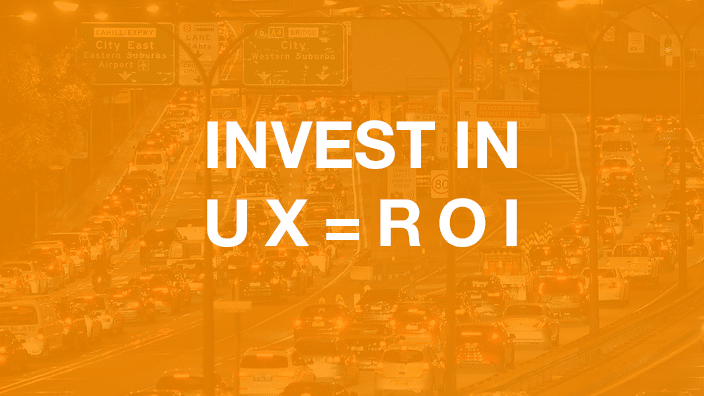
User Experience Design as an Investment
It is unbelievable how UX is undervalued and overlooked by many businesses and whole industries altogether. UX is one of those things you may not pay attention to when it’s done well. It’s when a UX is poorly developed that you start to notice. You might compare it to city planning. For example, you only notice how well Brisbane’s cityscape is laid out if you’ve been to a place like Sydney. Brisbane’s design is logical and orderly while most would argue that Sydney is filled with odd intersections, and illogical layouts. The user experience for traveling in Sydney is frustrating, at the very least. Tragically, many people view UX work as something that is done after coding to “make it look good.” They couldn’t be more wrong. We not-so-secretly call this “putting lipstick on a pig.”
Good usability means better learnability. What this means is that a usable product should be intuitive, making it easier to learn. In the case of an ecommerce store, good UX for the shopper translates to a smooth browsing experience and a quicker checkout process. This in turn equates to an increase in sales for your business. This is quite beneficial because users who cannot navigate themselves or find what they’re looking for, become frustrated and leave deeming your site unusable. If users leave your site satisfied with their experience, they are more likely to return.
The aesthetic appeal of your website is important, but avoid choosing designs based on what looks and feels good to you. Your company’s website isn’t for you. It’s for your market. If it doesn’t resonate with the people who will be directed there, it won’t help you improve conversion rates. A poor understanding of your target market will turn your website from a money making investment into a depreciating asset.
Often UX is an afterthought (“we’ll do summative testing at the end”). In order to be effective, UX methodologies and processes need to be applied from the beginning. UX has moved from an afterthought to a central enterprise project criteria, with a direct impact on user adoption, and thus the success of the project.
“For each dollar a company invests in developing the usability of a product, the company receives $10-$100 in benefits and wins customer satisfaction and continued business. Furthermore, industry data shows that for each dollar spent to fix a problem during product design, $10 is spent to fix the same problem in product development, and $100 or more is spent to fix the same problem after product release.” Usability cost-benefit data shows that including usability in product development actually cuts the time to market and increases sales because usability and ease of use, build quality into products and catch many expensive problems early on in the cycle when they can be addressed at lower cost. Finally, working with users from the beginning of a product cycle ensures that the product is being designed so that users will be satisfied.
